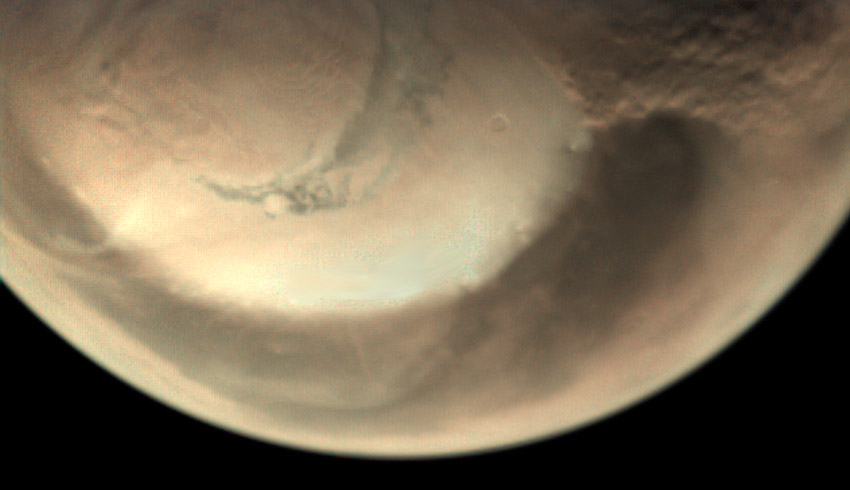The findings, published in the journal Nature Astronomy, point to the existence of multiple ponds of hypersaline water across the Martian polar surface.
Co-lead author Sebastian Lauro from Roma Tre University said the team borrowed a methodology commonly used in radar sounder investigations of subglacial lakes in Antarctica, Canada and Greenland, adapting the method to analyse old and new MARSIS data.
“The interpretation that best reconciles all the available evidence is that the high intensity reflections (from Mars) are coming from extended pools of liquid water,” he said.
Roma Tre University, along with the Italian Space Agency and Italy’s National Institute for Astrophysics (INAF), were involved in the initial 2018 study, which detected an area of strong reflectivity approximately 1.5 kilometres beneath the South Polar Layered Deposits, a thick polar cap formed by layers of ice and dust.
The announcement was followed by efforts to confirm the initial finding and to further understand the conditions that would allow liquid water to persist under the Martian south polar ice cap.
“Not only did we confirm the position, extent and strength of the reflector from our 2018 study”, co-lead author Elena Pettinelli of Roma Tre University explained, “but we found three new bright areas.”
This new breakthrough has been made by a multidisciplinary 13-member team comprising physicists, geologists and engineers from the University of Southern Queensland, University Roma Tre, Jacobs University (Germany), INAF, and Italy’s Consiglio Nazionale delle Ricerche (National Research Council).
Co-author Graziella Caprarelli, adjunct research fellow with USQ’s Centre for Astrophysics, said laboratory experiments that studied the stability of hypersaline aqueous solutions (brines) helped explain the presence of liquid water.
“These experiments have demonstrated that brines can persist for geologically significant periods of time even at the temperatures typical of the Martian polar regions (considerably below the freezing temperature of pure water),” she said.
Enrico Flamini, president of the International Research School of Planetary Sciences at the University of Chieti-Pescara (Italy), formerly science mission programs manager with the Italian Space Agency, said, “To state that these new results make me happy is not enough.
“The biggest unanswered question from our earlier paper was: is this the only evidence of sub-ice liquid water? At the time we did not have enough evidence to address this question, but this new research demonstrates that the 2018 discovery was only the first piece of evidence of a widespread system of liquid water bodies in the Martian subsurface.”
Principal investigator of the MARSIS experiment, Roberto Orosei, said, "While the existence of a single subglacial lake could be attributed to exceptional conditions such as the presence of a volcano under the ice sheet, the discovery of an entire system of lakes implies that their formation process is relatively simple and common, and that these lakes have probably existed for much of Mars' history.
“For this reason, they could still retain traces of any life forms that could have evolved when Mars had a dense atmosphere, a milder climate and the presence of liquid water on the surface, similar to the early Earth."
For Angelo Olivieri, Italian Space Agency coordinator for the MARSIS radar sounder, this latest discovery justifies efforts, over the past several years, in this strategic sector of research on Mars, and further demonstrates how Italy has what it takes to consolidate its leadership in the development and data analysis of this type of radar.
With the study published in Nature Astronomy, the team confirms that thick ice sheets, far from being uniformly structured wastelands, should be viewed as stratigraphically and physically complex geological formations, deserving to be fully explored in detail.
At the conclusion of their report the team suggested that, because brines had been shown to have potential to sustain microbial life in extreme conditions, renewed efforts should be made to explore the polar regions of Mars, with the specific purpose of finding reservoirs of subglacial water, and of determining their composition and astrobiological potential.

